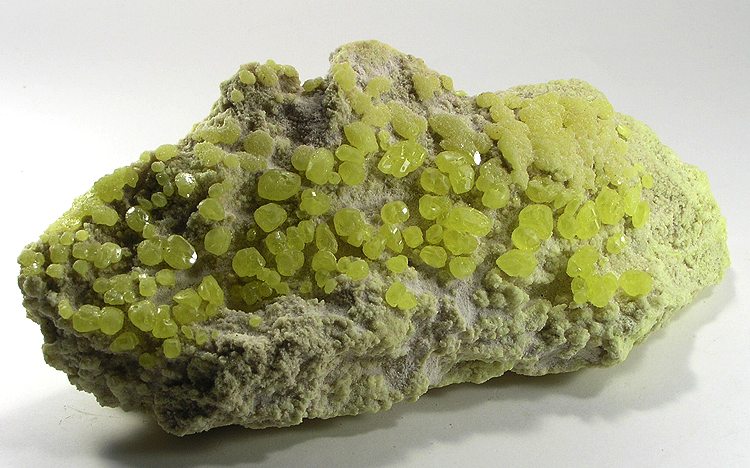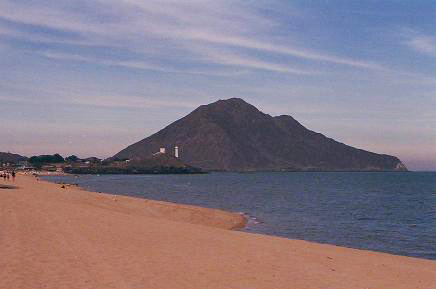User:Mfcmloks53/sandbox
Jump to navigation
Jump to search
Baja California and Gulf of California
Animal and Plant Species:
Animal Species: Vaquita (Phocoena sinus) This wonderful aquatic creature named Vaquita is under the Porpoises family which is a long group of marine animals that are mammals that are classified as Phocoenidae. Also the Vaquita, is an endemic animal, that is to say relevant of its location that receives its name “ Vaquita” which in Spanish means “little cow." [1] This species appears in the Gulf of Baja California and unfortunately is in danger of extinction.
Cultural Significance: The Vaquita is one of the few species of the porpoise endemic which means that it exists only one place in the planet. Because of this it can bring many tourists in the area for ecotourism which is environmental tourism that sees wildlife in its habitat. But because unfortunately the Vaquita is in danger of extinction it can negatively affect the cultural aspect of the areas surrounding the Gulf of Mexico. [2]
Ecological Trouble: Unfortunately, the Vaquita is in danger to extinction. Because of this there will be fewer animals for both prey and predators many sea creatures will be affected by this in which the balance of the food chain in the Gulf of Mexico will have to change and adapt with the disappearance of this wonderful aquatic creature. Vaquitas usually eat around a dozen different type of small and medium sized fish in which will have one less predator so their numbers can grow and affect the food chain their and also other larger species such as sharks were the Vaquita’s predator in which they will have one less food source again negatively affecting the food chain. [3]
Plant species: Ocotillo (Fouquieria splendens) This unique plant named the Ocotillo also known as a Fouquieria Splendens is a tall, greyish/greenish spiky plant from the Plantae family. [5] This plant isn't considered a true cactus even though it is covered in thorns and is ingenious to both the Sonoran Desert and the Chihuahuan Desert.
Cultural Significance: The Ocotillo does flower but only when it rains and when the flower dries it can be collected and used for tisanes which is an herbal tea. Also, Native American use to use to cut off the flowers when they blossomed and also cut of parts of the root and collect them for when someone in the tribe use to get cut they would apply either the root or the flower on the open cut which slowed down the bleeding. [6]
Ecological Significance: Both White-Tailed deer and Mule deer have the Ocotillo in their diet, but white-tail deer tends to eat much more Ocotillo than the Mule deer. Because the Ocotillo does flower both hummingbirds and native carpenter bees are able to get nectar from them which also helps the Ocotillo spread its pollen. [7] Also, it can provide some cover or shelter from the hot desert for smaller mammals, birds and reptiles.
The Cultural Use of Minerals in Baja California and the Gulf of California:
Baja California is home to a total of 161 operating mines in the whole Mexican state. A total of 19 different minerals are being mined which are Gold, Tungsten, Copper, Iron, Silver, Phosphorus-Phosphates, Sulfur, Manganese, Lead, Aluminum, Barium-Barite, Graphite, Silica, Zinc, Zirconium, Titanium, Titanium Metal, Molybdenum and Chromium. The mines are spread out through the state of Baja California and are broken into 5 different provinces which is placed depending on its location and what are mined. In the first province deposits of mesothermal sulfates of iron, copper and gold are being mined. The second province corresponds to the gold veins distributed along the whole state. The third province corresponds to deposits of tungsten. The fourth province corresponds to the deposits of manganese sulfites, barite, lead, zinc and silver. The fifth province involves the gold pleasure deposits. Some of the cities in Baja California that have these mines are Tijuana (which has 23 operating mines), Ensenada (which has 13 operating mines) and Mexicali (which has 4 operating mines). More mines are located in other cities and towns throughout the Baja California region. [9]
Water and Land use in Baja California and Gulf of California:
For water usage the water is gathered from the Colorado River in Mexicali Baja California and with a canal system it goes through La Rumorosa which goes to into a reservoir named “El Carrizo” in which Tecate, Rosarito and Tijuana Baja California. In the south most of the water is collected by rainfall in the mountains named “Sierra de las Trincheras” and “El Novillo” in which water is distributed to La Paz and its surrounding towns. [11]
For land usage, unfortunately, there is a lot of trash that is illegally dumped throughout the desert and in the ocean but the trash that is collected, each city in Baja California gathers it and disposes it to its closest landfill in which each large city has their own in their outskirts and the smaller towns around it uses them as well. Landfills are located in San Luis Rio Colorado, Mexicali, Tijuana, Ensenada, San Quintin, Rosarito, Santa Rosalia, Loreto and La Paz. [13] Sewage waste is also disposed of in landfills alongside solid waste.
Opportunities and threats of Baja California and the Gulf of California
Many opportunities are found in Baja California because it is in the middle of both the Pacific Ocean and the Gulf of California. Because of this tourism is in every city that is in the shore to either of the Pacific Ocean or the Gulf of California. For example, San Felipe is in the shore of the Gulf of California and because of this many people from both the U.S and other parts of Mexico go there to enjoy the beach. [14] Also because of the tourism the beaches bring San Felipe they also host an off-road racing event named San Felipe 250 which happens yearly bringing more people to this city.
The threats from what the Baja California Peninsula and the Gulf of California suffers from are all done by humans. The principal threats are livestock ranching, salt extraction, and hunting. With ranching many acres of space are taken away in which affected both populations of mule deer and bighorn sheep significantly. With hunting because so much deer type animals are being hunted it has affected the population of Pumas in the area due to they no longer have their main source of food available as much as they were having. And with the salt extraction from the see this has negatively affected the breeding and migration of gray whales. [16]
References
[edit | edit source]- ↑ The Marine Mammal Center. (2019, January 11). Retrieved May 7, 2020, from https://www.marinemammalcenter.org/science/Working-with-Endangered-Species/vaquita.html
- ↑ Vaquita | Species | WWF. (n.d.). Retrieved May 7, 2020, from https://www.worldwildlife.org/species/vaquita
- ↑ Vaquita | Species | WWF. (n.d.). Retrieved May 7, 2020, from https://www.worldwildlife.org/species/vaquita
- ↑ File:Vaquita6 Olson NOAA.jpg - Wikimedia Commons. (n.d.). In Wikimedia. Retrieved May 8, 2020, from https://commons.wikimedia.org/wiki/File:Vaquita6_Olson_NOAA.jpg
- ↑ LADY BIRD JOHNSON WILDFLOWER CENTER. (n.d.). Fouquieria splendens. Retrieved May 7, 2020, from https://www.wildflower.org/plants/result.php?id_plant=fosp2
- ↑ Munsey, S. (2019, May 14). 10 ocotillo facts that will make you love this desert plant even more. Retrieved May 7, 2020, from https://thisistucson.com/tucsonlife/ocotillo-facts-that-will-make-you-love-this-desert-plant/article_27f6a926-314c-11e8-abf2-1b0322c94205.html
- ↑ Munsey, S. (2019, May 14). 10 ocotillo facts that will make you love this desert plant even more. Retrieved May 7, 2020, from https://thisistucson.com/tucsonlife/ocotillo-facts-that-will-make-you-love-this-desert-plant/article_27f6a926-314c-11e8-abf2-1b0322c94205.html
- ↑ File:Ocotillo 01.jpg - Wikimedia Commons. (n.d.). In Wikimedia. Retrieved May 7, 2020, from https://commons.wikimedia.org/wiki/File:Ocotillo_01.jpg
- ↑ Wilson, I. F. W. (n.d.). Geology and Mineral Deposits of the Boleo Copper District Baja California, Mexico. Retrieved May 7, 2020, from https://pubs.usgs.gov/pp/0273/report.pdf
- ↑ File:Sulphur-43107.jpg - Wikimedia Commons. (n.d.). In Wikimedia. Retrieved May 7, 2020, from https://commons.wikimedia.org/wiki/File:Sulphur-43107.jpg
- ↑ Garcia, L. A. G. (2016, November 30). La ruta del agua (la poca que queda) en Baja California. Retrieved May 7, 2020, from https://www.sandiegored.com/es/noticias/133217/La-ruta-del-agua-la-poca-que-queda-en-Baja-California
- ↑ File:Presa Plutarco Elias Calles “El Novillo”.jpg - Wikimedia Commons. (n.d.). In Wikimedia. Retrieved May 7, 2020, from https://commons.wikimedia.org/wiki/File:Presa_Plutarco_Elias_Calles_%22El_Novillo%22.jpg
- ↑ GOBIERNO DEL ESTADO DE BAJA CALIFORNIA SUR. (n.d.). PROGRAMA ESTATAL PARA LA PREVENCIÓN Y GESTIÓN INTEGRAL DE RESIDUOS PARA EL ESTADO DE BAJA CALIFORNIA SUR. Retrieved May 7, 2020, from https://www.gob.mx/cms/uploads/attachment/file/187449/Baja_California_Sur.pdf
- ↑ Experience San Felipe. (n.d.). Retrieved May 7, 2020, from https://www.mexperience.com/travel/beaches/san-felipe/
- ↑ -felipe-baja-california-2000.jpg - Wikimedia Commons. (n.d.). In Wikimedia. Retrieved May 7, 2020, from https://commons.wikimedia.org/wiki/File:San-felipe-baja-california-2000.jpg
- ↑ WWF. (n.d.). Southern North America: Baja California Peninsula in Mexico | Ecoregions | WWF. Retrieved May 7, 2020, from https://www.worldwildlife.org/ecoregions/na1301




